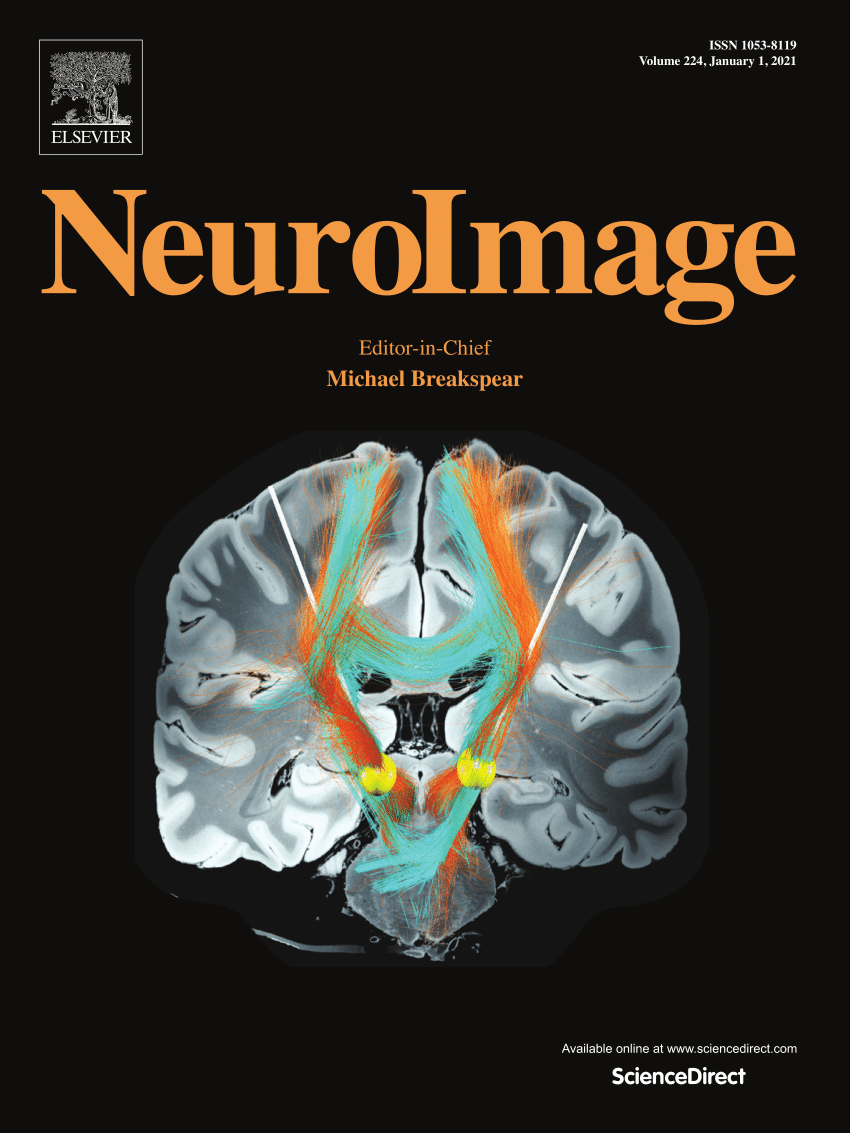Resting state of human brain measured by fMRI experiment is governed more dominantly by essential mode as a global signal rather than default mode network
IF 4.7
2区 医学
Q1 NEUROIMAGING
引用次数: 0
Abstract
Resting-state of the human brain has been described by a combination of various basis modes including the default mode network (DMN) identified by fMRI BOLD signals in human brains. Whether DMN is the most dominant representation of the resting-state has been under question. Here, we investigated the unexplored yet fundamental nature of the resting-state. In the absence of global signal regression for the analysis of brain-wide spatial activity pattern, the fMRI BOLD spatiotemporal signals during the rest were completely decomposed into time-invariant spatial-expression basis modes (SEBMs) and their time-evolution basis modes (TEBMs). Contrary to our conventional concept above, similarity clustering analysis of the SEBMs from 166 human brains revealed that the most dominant SEBM cluster is an asymmetric mode where the distribution of the sign of the components is skewed in one direction, for which we call essential mode (EM), whereas the second dominant SEBM cluster resembles the spatial pattern of DMN. Having removed the strong 1/f noise in the power spectrum of TEBMs, the genuine oscillatory behavior embedded in TEBMs of EM and DMN-like mode was uncovered around the low-frequency range below 0.2 Hz.
通过 fMRI 实验测量的人脑静息状态更主要地受作为全局信号的基本模式而非默认模式网络的支配。
人脑的静息状态是由各种基础模式组合而成的,其中包括由人脑 fMRI BOLD 信号识别出的默认模式网络(DMN)。DMN 是否是静息态最主要的表征一直是个问题。在此,我们研究了静息态尚未被探索的基本性质。在没有全局信号回归分析全脑空间活动模式的情况下,我们将静息时的 fMRI BOLD 时空信号完全分解为时间不变的空间表达基模(SEMM)及其时间演化基模(TEBM)。与我们上述的传统概念相反,对来自 166 个人类大脑的 SEBM 进行相似性聚类分析后发现,最主要的 SEBM 聚类是一种非对称模式,其成分的符号分布向一个方向倾斜,我们称之为基本模式(EM),而第二个主要的 SEBM 聚类则类似于 DMN 的空间模式。在去除 TEBM 功率谱中的强 1/f 噪声后,我们发现了 EM 和 DMN 类模式的 TEBM 在 0.2 Hz 以下的低频范围内的真正振荡行为。
本文章由计算机程序翻译,如有差异,请以英文原文为准。
求助全文
约1分钟内获得全文
求助全文
来源期刊

NeuroImage
医学-核医学
CiteScore
11.30
自引率
10.50%
发文量
809
审稿时长
63 days
期刊介绍:
NeuroImage, a Journal of Brain Function provides a vehicle for communicating important advances in acquiring, analyzing, and modelling neuroimaging data and in applying these techniques to the study of structure-function and brain-behavior relationships. Though the emphasis is on the macroscopic level of human brain organization, meso-and microscopic neuroimaging across all species will be considered if informative for understanding the aforementioned relationships.
 求助内容:
求助内容: 应助结果提醒方式:
应助结果提醒方式:


